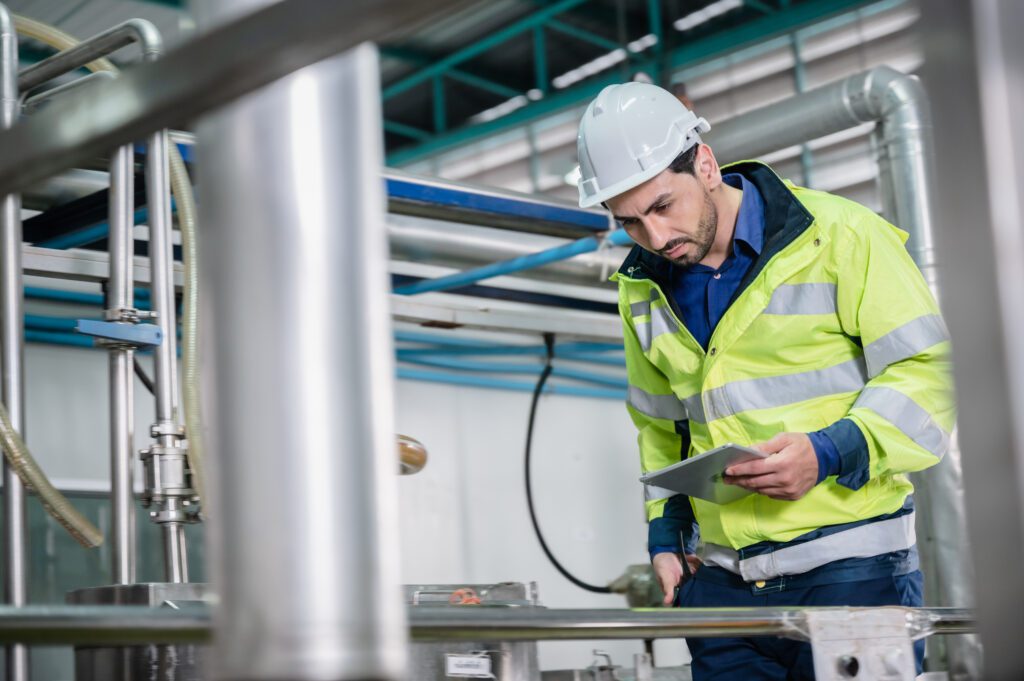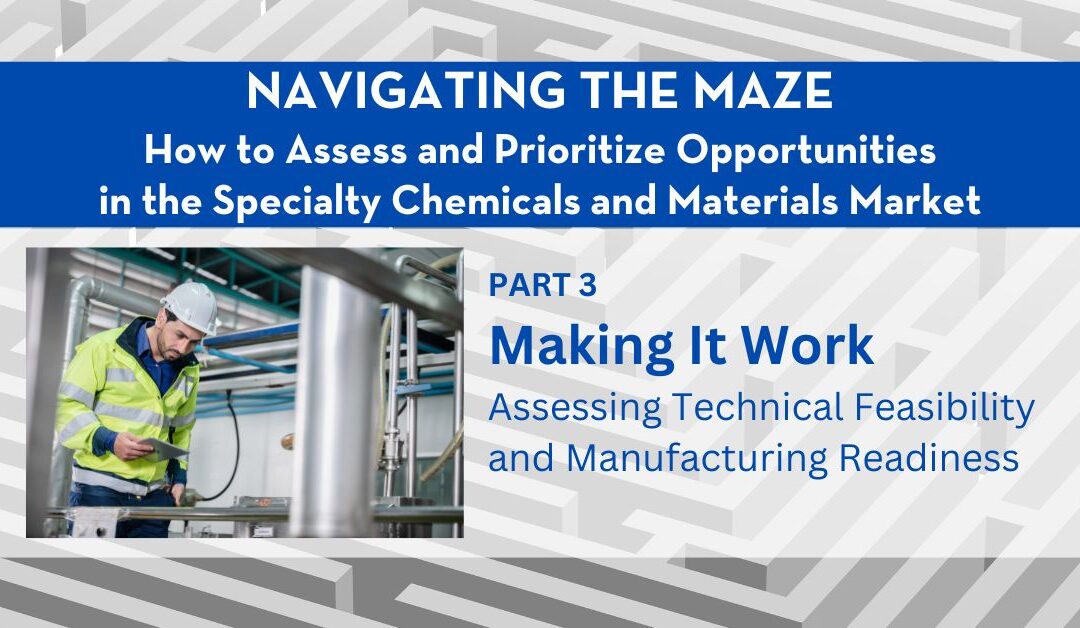Table of Contents
After building the right interdisciplinary team and evaluating market and commercial potential, the next step in the opportunity assessment process is to determine whether you can actually deliver. That’s where technical feasibility and manufacturing readiness come into play.
In the specialty chemicals and materials industry, a promising market opportunity means little if your organization can’t formulate, scale, or manufacture the product effectively. This post outlines how to assess technical complexity and production viability before committing major resources.
Technical Feasibility: Is It Scientifically and Technically Achievable?
Before diving into pilot trials or commercial scale-up, your technical team should thoroughly evaluate whether the product can meet required performance standards and customer expectations. Start by asking:
- What are the critical-to-quality (CTQ) attributes for this application? Dry time, adhesion, UV resistance, corrosion protection?
- Do we have the expertise in-house? Is specialty expertise required to develop and evaluate materials?
- Are there technical trade-offs or limitations? Will improving one property compromise another?
- Is the development timeline reasonable? Are we prepared for a multi-year validation process if needed?
Understanding what success looks like, both in the lab and in the field, is essential. Early lab results may look promising, but specialty expertise or an extensive development timeline can complicate the path to commercialization.
Example: Additives to Enhance Biodegradability
Imagine your company is developing new additives to enhance the biodegradability of plastic packaging. Initial screening evaluations showed promising results, but some of the most interesting results involved embedded enzymes. The technology is promising but still early stage. Your company understands all of the CTQs from the perspective of biodegradable plastics but has no internal expertise or lab capabilities for enzymes.
Your team must now determine if these limitations can be overcome through partnerships, talent acquisition, and/or investment in lab capabilities. If not, the opportunity may require substantially more time and investment than initially expected.

The Role of Intellectual Property
Technical feasibility also includes evaluating intellectual property (IP) opportunities and risks:
- Do we hold or need patents?
- Is the formulation novel, or could it be reverse engineered?
- Can we create a sustainable competitive edge through technical know-how?
Strong IP can increase the attractiveness of an opportunity and improve ROI by defending your innovation in the marketplace.
Manufacturing Readiness: Can We Produce It at Scale?
Once your product is technically viable, you must determine whether it can be manufactured at the necessary scale and cost. This is often where the rubber meets the road. Consider:
- Do we have the right equipment and facilities? Are we set up for batch or continuous production?
- Are raw materials readily available and cost-stable? What are the supply chain risks?
- Are there environmental or safety hazards during production? What additional training or controls are required?
- Is capital investment required for scale-up? If so, is the expected ROI compelling?
Manufacturing professionals bring valuable insight into these questions, identifying constraints that may not be obvious during the lab phase. Their input ensures you’re not overpromising on cost, availability, or performance.
Download the full
navigating the maze white paper
Integration with Interdisciplinary Teams
Technical and manufacturing teams should work side-by-side with commercial leaders to assess trade-offs. For example, a product that performs exceptionally well but requires a $2 million capital upgrade may not be viable unless it targets a premium, high-margin segment.
Your interdisciplinary team must weigh:
- Technical complexity vs. potential payoff
- Time-to-market vs. first-mover advantage
- Operational changes vs. customer expectations
These discussions help prioritize opportunities where capabilities and ambition are aligned.
Bringing It All Together
Technical feasibility and manufacturing readiness are critical checkpoints in the opportunity assessment process. They ensure that your team isn’t just chasing the right ideas — but also executing them in ways that are cost-effective, compliant, and scalable.
In the final post of this series, we’ll discuss how to bring all these elements together into a quantitative scoring system to help rank and prioritize your best opportunities.or delivering on your strategic vision.
To learn more, reach out to the author at cmorrison@chemquest.com.
How can we help you? Let’s start talking: https://chemquest.com/lets-start-talking/


